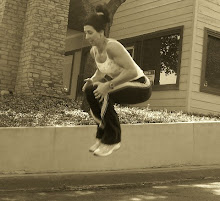Lactate is a product of rapid breakdown of glycogen and is
recyled back into reusable energy form by the liver and
muscle. Lactate does not cause fatique but instead tries
to slow it down. The fatique associated with lactate
accumulation actually comes from an imbalance of
ATP during vigorous exercise. When ATP use and
resynthesis are not in balance your body releases
hydrogen ions that cause the blood and muscle to
become more acidic. Muscles do not like to contract
in such an environment and the rate and stength
of the contraction will decrease unless buffering mechanisms
like lactate can bind and remove hydrogen ions.
Your body also gets rid of hydrogen ions thru carbon
dioxide: exhaling.
The rapid rate of beathing during intense exercise is the
body's attempt to utilize that buffer by quickly removing
carbon dioxide and thus hydrogen ions from bloodstream.
However, during extreme or prolonged vigoruous intense
exercise, there is a point or threshold where the hydrogen
ion release is greater than your body can buffer. This is
the point where fatique takes over and you can no
longer maintain that intensity!
To raise your threshold, you must increase the intensity
of your training. For example if fatique sets in at a rate of
170 BPM, you can increase training so fatique occurs at
172 BPM. To read the entire article pick up a copy of the
onfitness magazine, Jan 2009 issue page 38.
Tuesday, January 26, 2010
Subscribe to:
Post Comments (Atom)


No comments:
Post a Comment